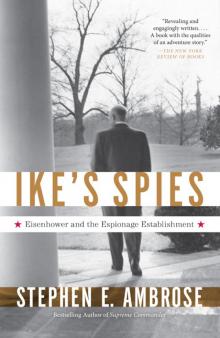
EPUB v4Abraham Lincoln, who had worked as a riverboat pilot before turning to politics, knew a thing or two about the problems of transporting goods and people from place to place. He was also convinced that the United States would flourish only if its far-flung regions were linked, replacing sectional loyalties with an overarching sense of national destiny.Building a transcontinental railroad, writes the prolific historian Stephen Ambrose, was second only to the abolition of slavery on Lincoln's presidential agenda. Through an ambitious program of land grants and low-interest government loans, he encouraged entrepreneurs such as California's "Big Four"--Charles Crocker, Collis Huntington, Mark Hopkins, and Leland Stanford--to take on the task of stringing steel rails from ocean to ocean. The real work of doing so, of course, was on the shoulders of immigrant men and women, mostly Chinese and Irish. These often-overlooked actors and what a contemporary called their "dreadful vitality" figure prominently in Ambrose's narrative, alongside the great financiers and surveyors who populate the standard textbooks.In the end, Ambrose writes, Lincoln's dream transformed the nation, marking "the first great triumph over time and space" and inaugurating what has come to be known as the American Century. David Haward Bain's Empire Express, which covers the same ground, is more substantial, but Ambrose provides an eminently readable study of a complex episode in American history. --Gregory McNameeFrom Publishers WeeklyEminent historian Ambrose notes that he once viewed the investors and businessmen who built the transcontinental railroad as robber barons who bilked the government and the public. But in his rough-and-tumble, triumphant sagaAsure to appeal to the many readers of Ambrose's bestseller Undaunted CourageAhe presents the continent-straddling railroad, yoking east and west at Promontory Point, Utah, in 1869, as a great democratic experiment, a triumph of capitalist organization, free labor, brains and determination that ushered in the American Century, galvanized trade and settlement, and made possible a national culture. To critics who charge that the railroad magnates were corrupt and grew obscenely rich and powerful through land grants and government bonds, Ambrose replies that the land grants never brought in enough money to pay the bills and, further, that the bonds were loans, fully paid back with huge interest payments. But this argument fails to convince, partly because Ambrose does a superlative job of re-creating the grim conditions in which the tracks were laid. The Central Pacific's workers were primarily Chinese, earning a dollar a day. Union Pacific workers were mostly Irish-American, young, unmarried ex-soldiers from both the Union and the Confederacy. Accidental deaths were commonplace, and the two companies, notwithstanding strikes, slowdowns and drunken vice, engaged in a frantic race, mandated by Congress, as the winner got the greater share of land and bonds. As a result of the haste, an enormous amount of shoddy construction had to be replaced. Native Americans, who wanted the iron rail out of their country, hopelessly waged guerrilla warfare against railroad builders who talked openly of exterminating them. Drawing on diaries, memoirs, letters, telegrams, newspaper accounts and other primary sources, Ambrose celebrates the railroad's unsung heroesAthe men who actually did the backbreaking work. 32 pages of b&w photos. 6-city author tour. (Sept.) Copyright 2000 Reed Business Information, Inc.
Read online














